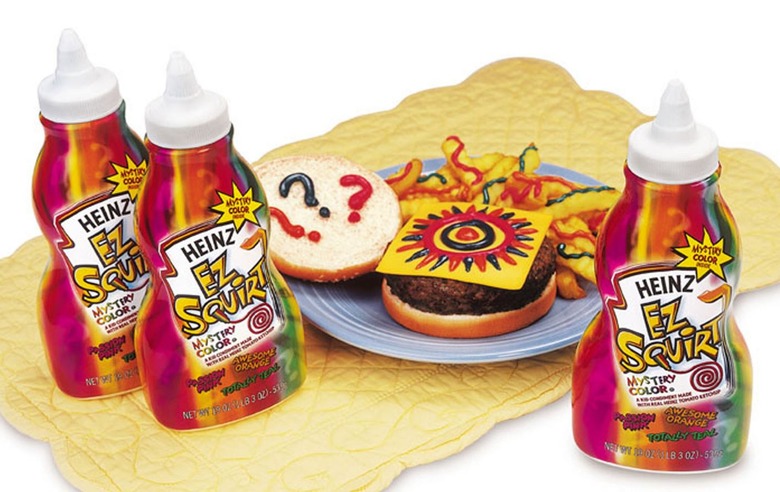New Coke, Colgate Lasagna, And 14 Other Food Products That Failed Miserably
When we go to the supermarket, we have certain expectations of the products that we'll see there. For example, ketchup will be red, not purple. Jell-O will not be celery-flavored. Life Savers will be little round candies, not soda. When these expectations are turned on their heads, not only is there a bit of cognitive dissonance, it's just bizarre. And it's not until the shock wears off that we actually ask ourselves, "Why would anyone possibly want to buy this?" We've tracked down 16 times when new product launches failed miserably.
New Coke, Colgate Lasagna, and 14 Other Food Products That Failed Miserably (Slideshow)
Brand extensions, or when a company rolls out a new product that's still connected to their core brand, are a mainstay of the food product industry. Most are well-thought-out, field tested, and happen to make a lot of sense: Oscar Mayer's known for its lunch meat, so why not buy little rounds of their turkey, with cheese, crackers, a drink, and dessert, all packaged up in a tidy box? Lunchables were a hit when they were rolled out in 1988 for that very reason: it made sense, and parents trusted that the brand would be able to provide a decent, complete lunch for their kid. However, while the brand extensions we'll be taking a look at today might have made sense to some exhausted brand development executive somewhere, they certainly weren't hits with the general public.
For some expertise on why food products fail, we reached out to Christopher Cornyn, the former president of DINE, an agency called upon by major brands when they're looking to roll out new products.
"Creating a new food product is complex," Cornyn told us. "Today, you must satisfy up to five consumer need states. You have to take into consideration a consumer's functional, nutritional, emotional, social, and cultural needs. Ten years ago, you only had to satisfy one or two and you had a hit. Now inventing a new food product requires a holistic approach that addresses all of these."
While it might appear as if a food product's failure or success hinges simply on whether it tastes good or not, that's actually just the tip of the iceberg.
"The number one reason why food products fail is that companies don't focus on the strategy of positioning and packaging," Cornyn added. "Just because a food product tastes great doesn't mean you will have a runaway success. Simply put, the package is the product. Packaging does all the work. A food package protects, preserves, transports, gets attention, communicates, builds image, facilitates, instructs, educates, reminds, and should also have a secondary life. This is lost on many new product introductions."
If all of this sounds incredibly complex and psychological, that's because it is. While a vast amount of thought and resources go into every single food product that's released, there's no way to predict whether it will do well or not, for one reason:
"Food products fail because it is impossible to anticipate consumers' needs, wants and desires," Cornyn said. "Humans are complex."
Most of these failed products were trying to capitalize on a trend. There was a time when people made salads (with actual vegetables) that were firmly encased in Jell-O. So why not sell celery-flavored Jell-O? Back in the early '00s, when everything was taken to the "EXXXXTREME," the folks at Heinz thought that it would be super-extreme to roll out a line of ketchups in "extreme" colors like green and purple. And during the free-spirited '70s, when people were living the single-and-ready-to-mingle life, Gerber assumed that they'd be just as willing to eat what looked like baby food out of a little glass jar.
While the board room honchos and field testers might think that an idea is a good one (although we can't imagine that anyone actually believed that that last product, called Gerber Singles, would be a hit), there's really no way to know if a product will sell until it hits the shelves. Some of these brand extensions, like Lunchables, are still with us today, and others, like Lunchables' "Maxed Out," which was targeted toward adults and contained 40 percent more food, fell off the shelves almost immediately.
Thankfully, most of the products that ended up in the trash heap and remain an embarrassing stain on the reputation of the brands that produced them are gone but not forgotten. And hopefully they never will be forgotten, because some of these are damn hilarious.
